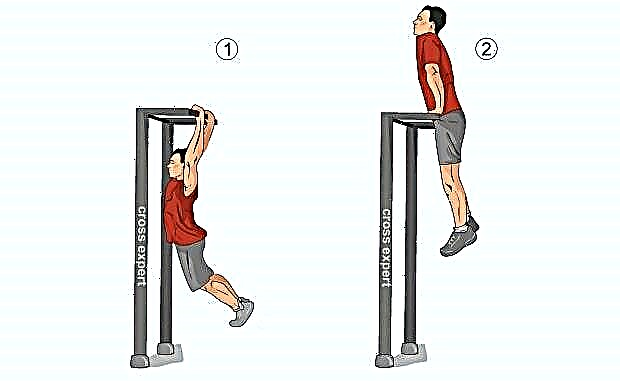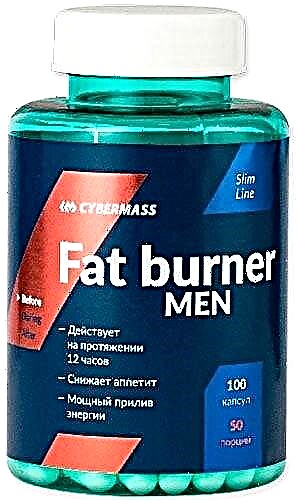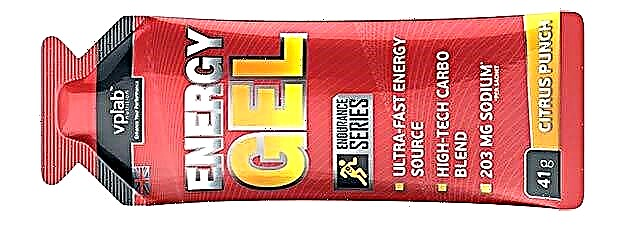Alanine is an amino acid present in tissues both in an unbound form and in various substances, complex protein molecules. In liver cells, it is transformed into glucose, and such reactions are one of the leading methods of gluconeogenesis (the formation of glucose from non-carbohydrate compounds).
Types and functions of alanine
Alanine is present in the body in two forms. Alpha-alanine takes part in the formation of protein molecules, and beta-alanine is an integral part of various bioactive substances.
The main tasks of alanine are to maintain nitrogen balance and constant blood glucose concentration. This amino acid is one of the most important sources of energy for the central nervous system and muscle fibers. With its help, connective tissues are formed.
Takes an active part in the metabolic processes of carbohydrates, fatty acids. Alanine is necessary for the normal functioning of the immune system, it stimulates biochemical reactions in which energy is produced, regulates the concentration of sugar in the blood.
Alanine enters the human body with food containing protein. If necessary, it can be formed from nitrogenous substances or during the breakdown of the protein carnosine.
Food sources of this compound are beef, pork, fish and seafood, poultry, dairy products, legumes, corn, rice.
Alanine deficiency is rare, since this amino acid is easily synthesized in the body if necessary.

Symptoms of a deficiency of this compound are:
- hypoglycemia;
- decreased immune status;
- high fatigue;
- excessive irritability, nervousness.
With intense physical exertion, a lack of alanine stimulates catabolic processes in muscle tissues. The constant deficiency of this compound significantly increases the likelihood of developing urolithiasis.
For humans, both a deficiency and an excess of alanine are harmful.
Signs of excessive levels of this amino acid are:
- long-term feeling of fatigue that does not go away even after sufficient rest;
- joint and muscle pain;
- the development of depressive and subdepressive states;
- sleep disorders;
- memory impairment, decreased ability to concentrate and concentrate.
In medicine, preparations containing alanine are used to treat and prevent problems with the prostate gland, in particular, the development of hyperplasia of glandular tissues. They are prescribed for parenteral nutrition of severely ill patients in order to provide the body with energy and maintain a stable blood sugar concentration.
Beta-alanine and carnosine
Beta-alanine is a form of amino acid where the amino group (a radical containing a nitrogen atom and two hydrogen atoms) is located in the beta position, and there is no choral center. This species is not involved in the formation of protein molecules and enzymes of large sizes, but is an integral part of many bioactive substances, including the peptide carnosine.
The compound is formed from chains of beta-alanine and histidine, and is found in large volumes in muscle fibers and cerebral tissues. Carnosine is not involved in metabolic processes, and this property provides its function as a specialized buffer. It prevents excessive oxidation of the environment in muscle fibers during intense physical exertion, and a change in the pH level towards the acidic side is the main factor in muscle wasting.
The additional intake of beta-alanine allows an increase in the concentration of carnosine in the tissues, which protects them from oxidative stress.
Application in sports
Supplementation with beta-alanine is used by athletes, as an additional intake of this amino acid is necessary during intense physical activity. Such tools are suitable for those who are engaged in bodybuilding, various types of rowing, team sports, crossfit.
In 2005, Dr. Jeff Stout presented the results of his research on the effects of beta-alanine on the body. The experiment involved untrained men, approximately the same physical parameters, receiving from 1.6 to 3.2 g of pure amino acid per day. It was found that taking beta-alanine increases the threshold of neuromuscular fatigue by 9%.
It has been proven by Japanese scientists (the research data can be viewed at the following link) that carnosine is good at eliminating muscle pain that occurs after intense exercise, and also accelerates the process of wound healing and tissue regeneration after injuries.
Taking beta-alanine supplements is essential for anaerobic athletes. This contributes to an increase in endurance, which means an increase in the effectiveness of training and muscle building.
In 2016, a journal published a review that analyzed all the available data on the use of beta-alanine supplements in sports.
The following conclusions were made:
- A 4-week intake of sports supplements with this amino acid significantly increases the carnosine content in muscle tissues, which prevents the development of oxidative stress, and also increases performance, which is more noticeable at peak loads;
- additional amounts of beta-alanine prevent the onset of neuromuscular fatigue, especially in the elderly;
- beta-alanine supplementation has no side effects, except for paresthesias.
To date, there is no serious enough reason to believe that taking beta-alanine improves strength and improves performance and endurance. While these properties of the amino acid remain questionable for specialists.
Admission rules
The daily requirement for alanine is about 3 g for a person. This amount is necessary for an ordinary adult, while athletes are advised to increase the dose of the amino acid to 3.5-6.4 g. This will provide the body with additional carnosine, increase endurance and performance.
The supplement should be taken three times a day, 400-800 mg, every 6-8 hours.
The duration of the course of beta-alanine intake is individual, but should be at least four weeks. Some athletes take the supplement for up to 12 weeks.
Contraindications and side effects
Taking supplements and preparations with beta-alanine is contraindicated in case of individual intolerance to the components of the product and gluten.
It is not recommended for pregnant and lactating women, since the effect of the substance in these cases has not been sufficiently studied. Diabetics should be very careful when taking such supplements. This can be done only after consulting a doctor.
High doses of beta-alanine can provoke mild sensory disorders, manifested by tingling, burning, a spontaneous feeling of "running creeps" (paresthesia). This is harmless and only indicates that the supplement is working.
However, exceeding the dosage does not affect the concentration of carnosine and does not increase endurance, so there is no sense in taking more than recommended amounts of the amino acid.
If paresthesias cause serious discomfort, then this side effect can be easily eliminated by reducing the dosage taken.
Beta-Alanine Sports Supplements
Sports nutrition manufacturers are developing various beta-alanine supplements. They can be purchased in the form of capsules filled with powder or solutions. Many foods combine this amino acid with creatine. It is believed that they mutually reinforce each other's action (synergy effect).
Common and effective beta-alanine supplements include:
- Jack3d from USPlabs;

- NO Shotgun by VPX;

- White Flood from Controlled Labs

- Double-T Sports NO Beta;

- Purple Wraath from Controlled Labs

- CM2 Alpha from SAN.

Strength athletes should combine beta-alanine with creatine to increase performance.
For greater physical endurance, it is advised to combine this amino acid with sodium bicarbonate (soda). Athletes also combine beta-alanine supplementation with other amino acid complexes (eg, BCAA), whey protein isolates and concentrates, and nitrogen donors (arginine, agmatine, various pre-workout complexes).









